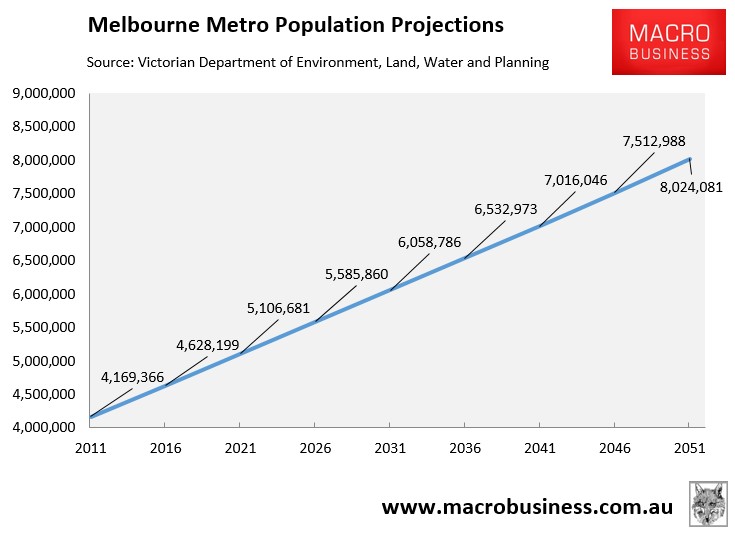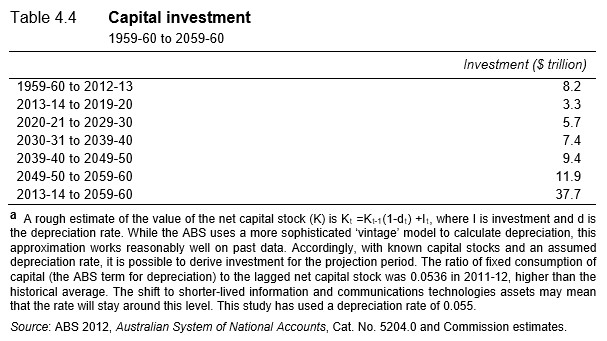One of the key reasons why Australia’s high population growth (immigration) is lowering the living standards of incumbent residents is because of the strain that it places on infrastructure, which inevitably leads to more congestion on roads, public transport, as well as more expensive housing.
Basic math (and commonsense) suggests that if you double the nation’s population, you need to at least double the stock of infrastructure to ensure that living standards are not reduced (other things equal).
In practice, however, the solution is not that simple. In already built-up cities like Sydney and Melbourne, which also happen to be the major magnets for new migrants, the cost of retrofitting new infrastructure to accommodate greater population densities can become prohibitively expensive because of the need for land buy-backs, tunnelling, as well as disruptions to existing infrastructure.
A case in point is the new $5.5 billion West Gate Tunnel in Melbourne which is due to open in 2022. Despite its humongous cost, this tunnel is only expected to shave 8 minutes off the typical commute time between Melbourne’s outer-west and the CBD. From The Age:
…a motorist commuting to the city from the outer west in the morning peak should expect to save eight minutes by taking the West Gate Tunnel instead of the Bolte Bridge, and another eight minutes on the peak-hour drive home.
The predictions are based on the year 2031, nine years after the West Gate Tunnel is due to open.
“Combined (AM and PM peak), a return trip between the Princes Freeway (Kororoit Creek) and the central city (Spencer Street and Dudley Street) may be up to 15 minutes faster in 2031,” the EES states.
The EES predicts the tunnel will bring a more than 10 per cent cut to vehicle numbers on the West Gate Bridge, which already strains to carry up to 220,000 vehicles a day, has peak-hour speeds of less than 30 km/h and causes congestion as far back as Hoppers Crossing.
It will also ease the burden on the Bolte Bridge by about 22,000 vehicles a day…
[The tunnel] will hand Transurban an extension of tolls on CityLink for at least a decade, in return for the toll road operator building and partly financing the new tollway…
Shadow treasurer Michael O’Brien said the documents showed the project was an “absolute dud”.
“We don’t support extra tolls on CityLink users – certainly not to pay for a dud project. And the more Victorians see of this Western Distributor the more the numbers just don’t add up,” he said.
Clearly, Melbournians are stuck between a rock and a hard place when it comes to digesting the federal government’s mass immigration program, which is projected to see the city’s population balloon by 97,000 people per year to 8 million residents mid-century:

Melbournians’ have effectively been handed the false choice of paying Transurban tolls for another decade in return for building this tunnel, and shaving a small amount of time from their commutes, or not building the tunnel and watching both the West Gate and Bolte Bridges become crush-loaded.
It’s the same dilemma nationally. In November 2013, the Productivity Commission (PC) released its final report on An Ageing Australia: Preparing for the Future, which warned that total private and public investment requirements over the next 50 years are estimated to be more than 5 times the cumulative investment made over the last half century:
Australia’s population is projected to increase to more than 38 million by 2060 [since raised by the PC to 40 million]… The likely population growth will place pressure on Australian cities… In response to the significant increase in the size of Australian cities, significant investment in transport and other infrastructure is likely to be required. This is true both within the cities themselves and for the links between regional and major cities. Policies will be needed to reduce congestion problems, and to ensure adequate infrastructure funding and investment efficiency…
Total private and public investment requirements over this 50 year period are estimated to be more than 5 times the cumulative investment made over the last half century, which reveals the importance of an efficient investment environment…
The PC report also warned that without such massive investment, multifactor productivity – the key driver of living standards – would fall.
The fact of the matter is that running a high immigration program requires massive investment and costs a lot, especially when it involves retrofitting existing infrastructure, as is the case in built-up cities like Melbourne and Sydney.
The most obvious solution is to significantly scale back immigration and forestall the need for costly new infrastructure investment in the first place, in the process raising incumbent residents’ living standards.


